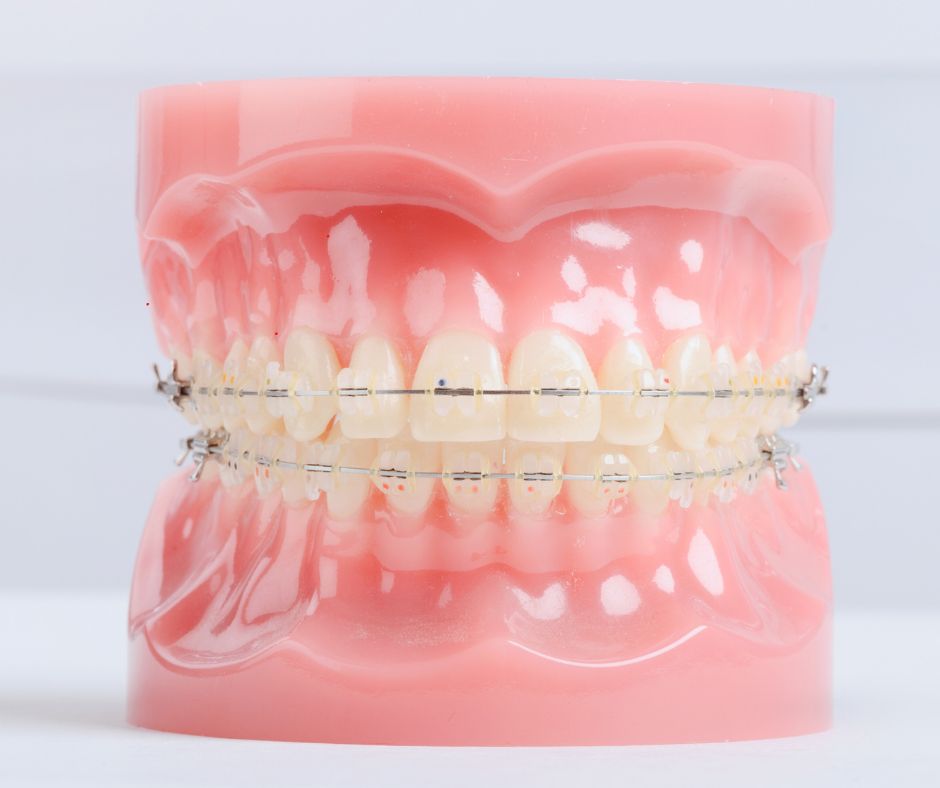Your orthodontist has recommended wearing orthodontic braces, but even though you see them more and more on the teeth of friends, acquaintances or even passersby, they are still a mystery to you? Here’s what you should know before your first detailed appointment with an orthodontic specialist…
- Why should you wear braces?
The function of orthodontic braces is quite clear: they are used to correct the position of teeth and fix jaw issues (misalignment). Additionally, orthodontic therapy has a positive impact on oral function (chewing, swallowing speech). It should be kept in mind that properly aligned teeth greatly facilitate maintaining oral hygiene, consequently reducing the risk of cavities, gingivitis and other gum problems. In the end, all of this results in what we first notice in people – a beautiful smile and the confidence that comes with it.
So, there’s no doubt that even though it is usually lengthy, orthodontic therapy pays off as it contributes in the long term to a better quality of life for the person undergoing it. With this in mind, you are ready for the next step, which is choosing the braces. Of course, the important decision is made in consultation with the orthodontist who will, taking into consideration the specific situation of each patient, suggest several options or recommend one type of braces. Before that conversation, it would be good to know what types of orthodontic braces exist and what their characteristics are.
- How many types of braces are on the market?
New technologies also provide new possibilities in orthodontics. That means the number of types of braces is increasing. However, we can distinguish between two main types of braces: fixed and removable braces.
- Fixed braces – the most well-known and commonly used type of braces. Regardless of the type of material they are made of (metal, ceramic…), they consist of so-called brackets that are bonded to each tooth and thin metal wires that pass through the brackets and connect them. Those wires are crucial in achieving the desired movement of teeth.
There are several types of fixed braces, depending on the types of brackets they have and the material they are made of.
Therefore, we distinguish between:
- Traditional brackets – those where the wire is attached with either elastic bands or metal ligatures;
- Self-ligating brackets – they have a slot through which the wire passes, it doesn’t require additional fixing.
Apart from the method of wire attachment, brackets also differ in the material they are made of, therefore they can be:
- steel,
- ceramic,
- plastic..
- Removable braces – they are easy to take off, but to be effective, they need to be worn for most of the day. This type of braces is most commonly used in children while their jaw is still developing. They are worn only in mixed dentition to facilitate fixed braces therapy.
There are also several types of removable braces, based on their purpose, desired goal or method of wearing. However, most commonly, there are two types of removable braces:
- monomaxillary (two-part) braces – they consist of two devices, one for each jaw;
- bimaxillary (single-part) braces – they consist of one device that simultaneously covers and fixes both the upper and lower jaws.
- Clear braces (aligners)
Clear braces, or rather a series of aligners, are being increasingly made in recent times. These aligners gradually adjust to the new position of teeth to complete the treatment with an ideal smile.
Each aligner is used for two weeks, during which the teeth gradually move to the desired position. Regular follow-ups with the doctor ensure that everything is going well. If the orthodontist doesn’t suggest otherwise, regular follow-ups should be done every 6 to 8 weeks.
Invisalign aligners are worn for 20 to 22 hours a day and are only removed during meals and brushing teeth, solving the biggest issue of traditional braces – complicated oral hygiene and subsequent occurrence of cavities and other dental problems.
Everything else you want to know can be learned during a visit to the orthodontist. Book your appointment here.













